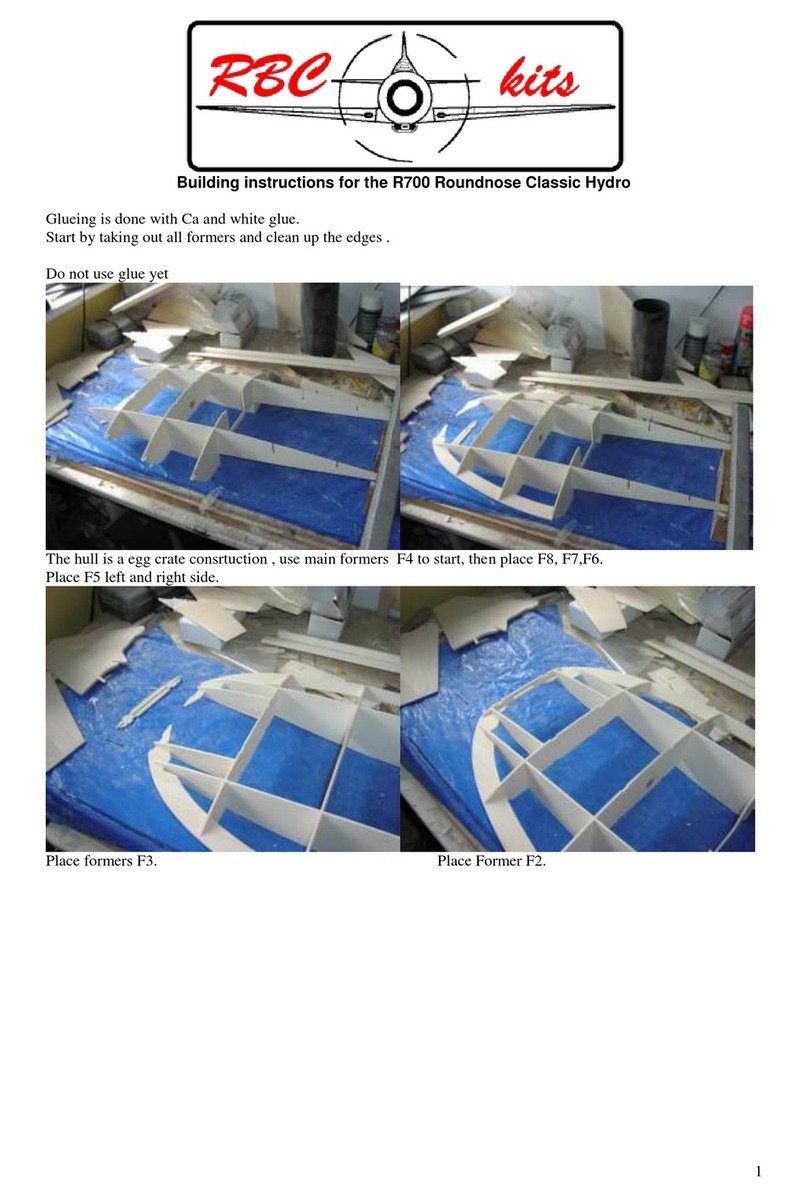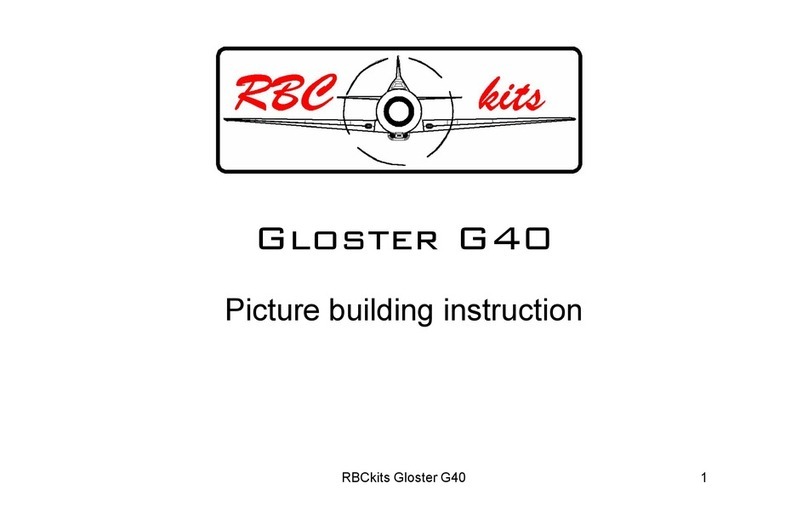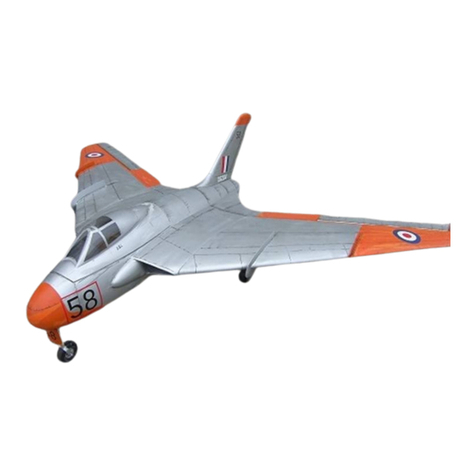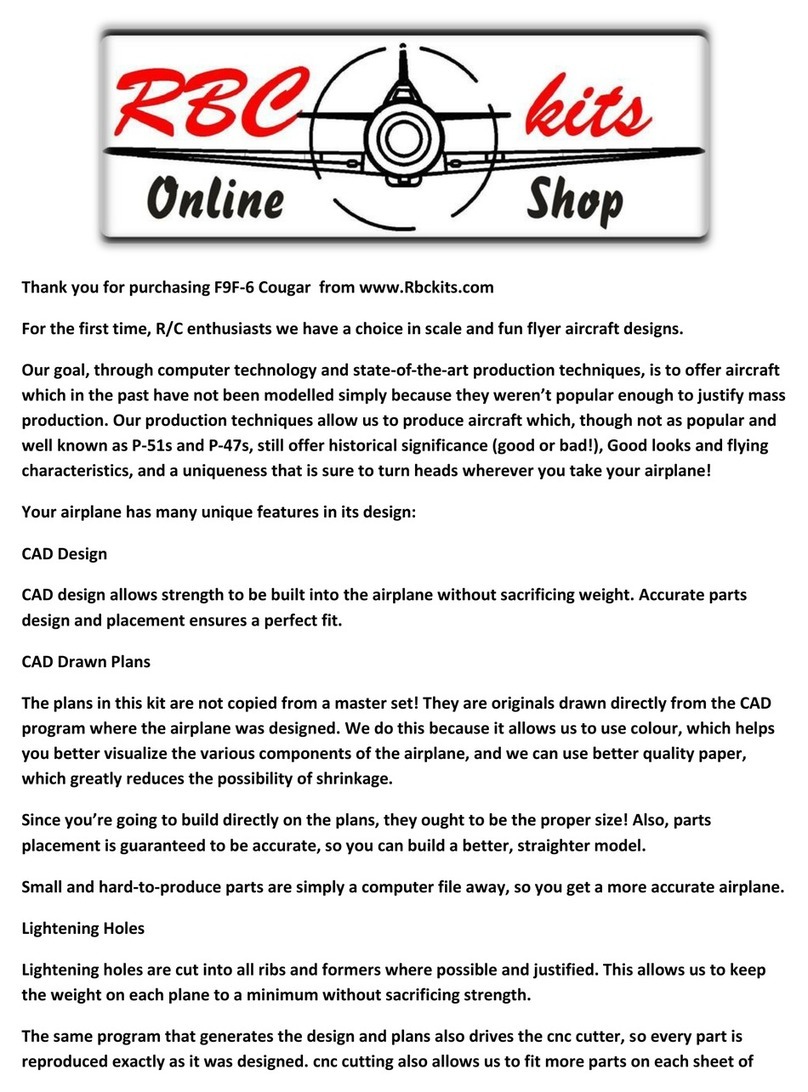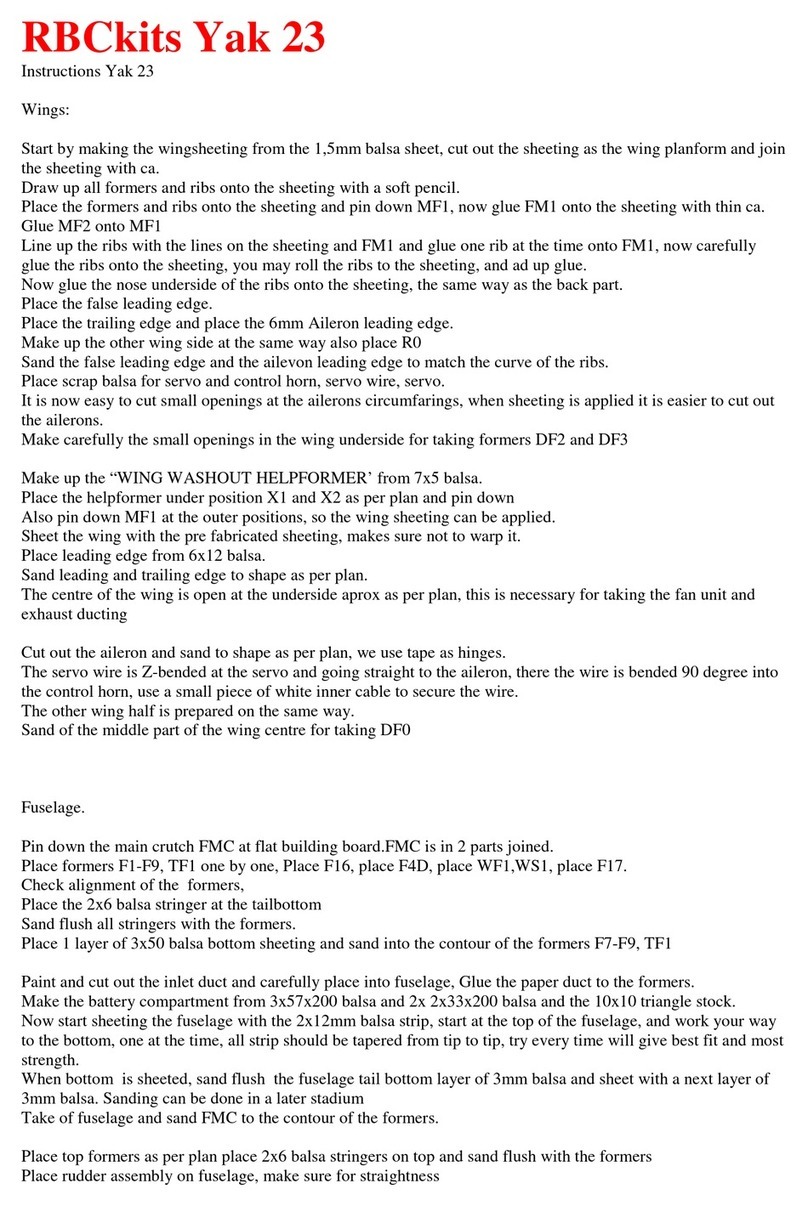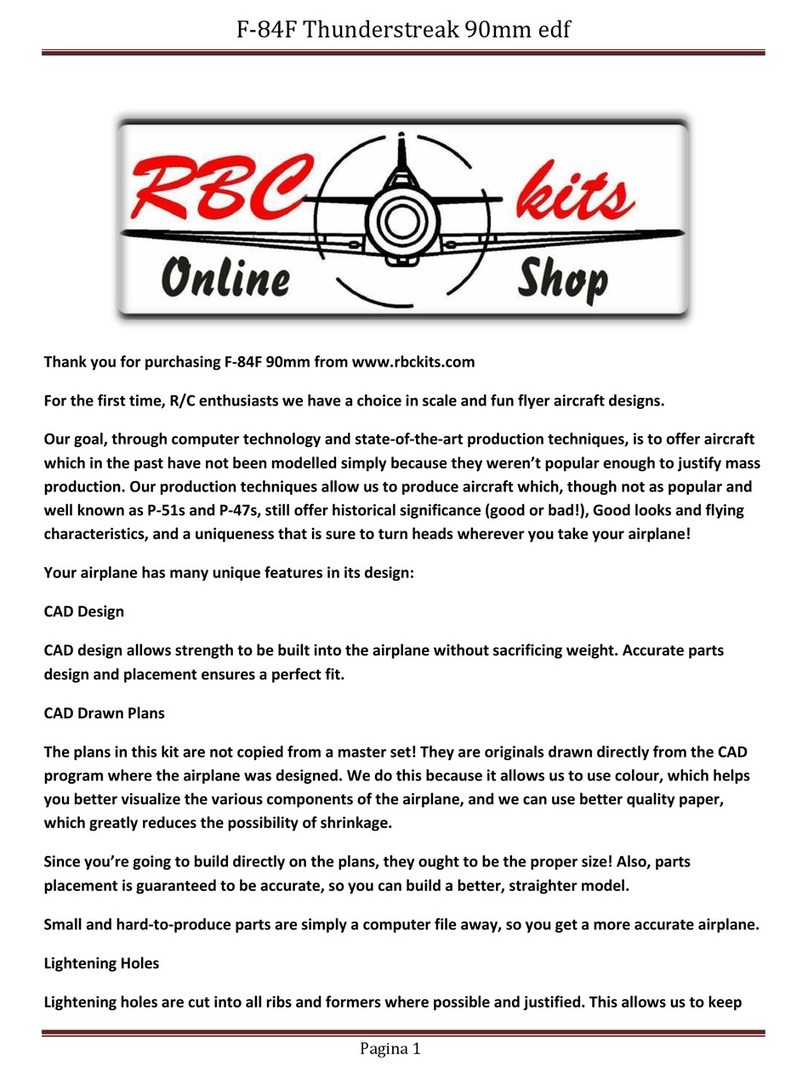
Construction Cessna L19 "Birddog"
All Kleben mit Sekundenkleber schnell und langsam erfolgen.
Trachflache:
Nehmen Sie alle CNC gefräste Spanten über die Flügel und reinigen Sie die Teile mit feinem Sandpapier.
Tippen Sie auf die Öffnungen in Rib R1 mit Gewinde M4 und härten mit ca.
Das Grundgerüst kopfüber auf die Zeichnung gebaut, siehe 1.
Merken Sie die 2x11 Balsaholz Stringer auf die Zeichnung und legen den Rahmen auf die Stringer so der
Zeichnung vergleicht.
Platz 2x11 Vorderkanten und die mittlere 2x11 Stringer, platzieren Sie den Spanten FF1 oben und unten und
Spanten AF1 oben und unten strutholder SH1, siehe Punkt 2
Make-up die untere Beplankung von der mitgelieferten 1,5 x100x1000 Balsaholz Blatt.
Zeichnen Sie ein paar Referenzlinien zum Auskleiden das Tragwerk.
Platzieren den Mittelteil des Flügels auf die untere Folie und Kleber mit ca.
Neigungswinkel nach oben den Mittelteil des Flügels, so daß der Spitzenteil bündig mit der Plane, Leim nun das
Spitzenteil auf die Folie ist, mit den wichtigsten ersteren, und die Rippen ein Kleber durch auf auf das
Bahnenmaterial zu starten.
Ort Hinterkante von 2x11 Balsa auf die Folie gegen die Rippen.
Helpformers Ort A, B, C auf den entsprechenden Positionen.
Jetzt festzunageln den Flügel auf die Zeichnung, ist die Unterseite des Flügels auf die Zeichnung.
Legen Sie ein Reststück von 1,5 mm Balsa auf die Servo-Position und platzieren Sie den Servo, machen die
Öffnung für den Servoarm und legen Sie das Servokabel.
Legen Sie die Querruder Vorderkante von 6x8 Balsa und legen Sie die Querruder Rippen von Schrott aus
Balsaholz und Form Querruder Vorderkante und Rippen zu bilden.
Machen Sie den 2mm Federbein wire Öffnung im Boden Folie.
Make-up die obere Folie zu planen und Kleber auf die Oberseite des Flügels Montage mit langsamen ca,
sicherzustellen, dass die Flügel auf den Tisch und den helpformers,
Wenn trocken, nehmen Sie den Flügel und bereinigen alle Kanten, Sand Hinterkante zu planen, statt
Vorderkante und Sand zu gestalten, siehe auch Zeichnung.
Ort Tipps aus 2 Teilen 10mm cncCUT Balsaholz und Leim, um Flügel, Sand zu gestalten.
Die Querruder nun ausgeschnitten und Sand das Querruder Kanten zu formen.
Legen Sie die Querruder Horn an der richtigen Position in Bezug auf die Querruderservos.
Beenden Sie die Flügel, um die Scharniere von der mitgelieferten Polyesterfolie, verwenden Sie nicht die PVC-
Folie für diese.
Nehmen Sie die Scharnieröffnungen mit einem scharfen Messer und Ort Scharniere, kleben sie mit dünnen ca.
Rumpf:
Beginnen Sie, indem Sie den Motorhalter, möchten Sie vielleicht dem Zufall dies für Ihre speziellen Motor oder
für eine 0,40-Viertakt.
Machen Sie das Motor-Aggregat aus Teilen FM1, 2,4,5,6 siehe 6.
Tippen Sie auf die Mittelrippen FT6 mit M4 und härten mit ca.
Kleben Sie die FT6 mit FT2, siehe 3,5 7
Machen Sie den Rumpf mittleren Teil von F4, die Sie haben, zu beteiligen, und F1, F5, F6 sperren sie zusammen
und Kleber mit ca.
Platz F3A und F3, Ort WH1 links und rechts in Übereinstimmung mit den Löchern in F6, hat das Fahrwerk dort
passen, Ort WH2 links und rechts.
Zeigen Doppel F10 und F11, darauf achten, nicht die Öffnung im F8 für die Aufnahme FR6 schließen.
Legen Sie die Fichten 6x6 Stringer vorne (Länge 200mm ca.). Kleben sie auch F3A, mit Hilfe von Template 1.
Legen Sie die midparts (Bild 7) auf die 6mm Fichte Stringer siehe 8, 9,10, verwenden Sie die Vorlage für die
richtige Höhe.
Zeigen ehemaligen F9 auf F8 die Innenseite der F9 sollte bündig mit der Oberkante der F8, siehe 9
Zeigen FT4 beide Seiten und Leim auf F9
Legen Sie die hinteren Streben von 6x6 Fichte siehe 11.
Heckteile
Make-up der Schwanz Teile aus: FR7, 8,9,10,11 und Bleche mit 1,5 mm Balsa-Cross-Grain-sehen 12 und 13
Make-up die Spitze des Schwanzes von FR2, 3,4 FR13 und 4x4 Balsaholz Stringer, Bogenlänge weise mit 1,5
mm Balsa und ließ Folie auf dem Rumpf weiter.


